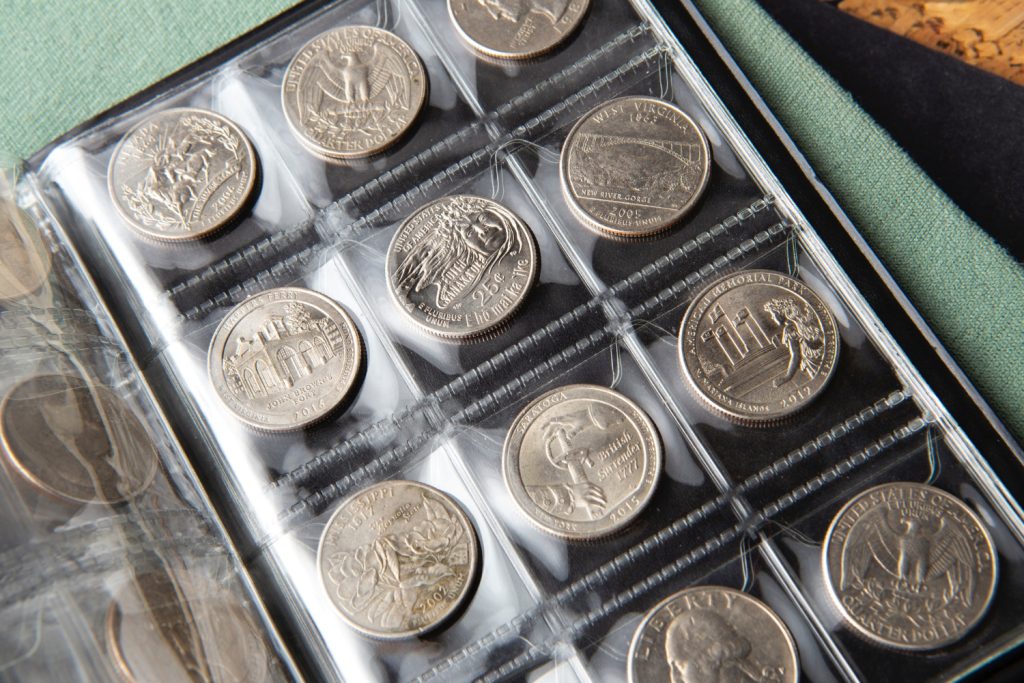
In times of inflation or market instability, investors often turn to tangible assets for security when stocks plummet and bonds lose value. The flight to safety becomes palpable during economic turmoil as portfolios heavy in paper assets suffer losses that shake confidence in traditional investments. Real, physical assets offer psychological comfort beyond just potential returns.
Among these, rare coins stand out for combining historical significance with lasting value that survives economic upheavals. Unlike stocks that can become worthless or currencies that inflate away, rare coins maintain intrinsic worth through precious metal content plus numismatic premiums that collector demand supports. This dual value basis provides resilience that pure financial instruments lack.
Why collectors and investors alike consider rare coins a steady hedge against modern financial uncertainty stems from tangibility, scarcity, and historical performance. Understanding what makes rare coins effective portfolio diversifiers helps investors appreciate benefits beyond just owning pretty metal objects. The advantages extend to practical considerations around privacy, portability, and wealth preservation that matter increasingly during uncertain times.
Intrinsic Value: History Meets Precious Metal
Precious metal content provides a floor value that rare coins cannot fall below regardless of collector market conditions. A gold coin might trade at huge numismatic premiums, but metal content ensures it always has baseline worth tied to gold prices. This intrinsic value creates downside protection that pure collectibles like art or antiques lack entirely.
Historical significance adds layers of value beyond just metal that pure bullion cannot offer. Coins that circulated during pivotal eras, featured important figures, or represented historical milestones carry cultural worth transcending monetary value. This historical dimension creates demand from collectors, museums, and historians that supports prices even when precious metal markets stagnate.
Dual value drivers mean rare coins benefit from both metal price increases and numismatic appreciation independently. Gold rallies lift all gold coins including rare ones, while growing collector interest raises numismatic premiums regardless of metal movements. This combination provides multiple paths to appreciation that enhance overall return potential compared to assets dependent on single value factors.
Rarity and Demand as Value Drivers
Limited supply from fixed historical mintages ensures scarcity that supports long-term value appreciation. Mints produced specific quantities decades or centuries ago, and no more will ever exist. This absolute scarcity contrasts with modern bullion programs that mint unlimited quantities meeting ongoing demand. Finite supply creates upward price pressure when demand increases without possibility of supply response.
Growing collector bases competing for unchanging supply drives prices higher over time as wealth accumulation creates more buyers. As economies develop and middle classes expand globally, more collectors enter markets seeking quality rare coins. This growing demand against fixed supply creates favorable supply-demand dynamics that benefit existing owners through price appreciation.
Attrition from losses, damage, and coins withdrawn into permanent collections further reduces available supply. Rare coins get lost, damaged, or disappear into collections that never sell, effectively removing them from markets permanently. This gradual supply reduction amplifies scarcity effects over time, supporting long-term value trends that favor holders who maintain coins in good condition.
How Rare Coins Perform During Economic Downturns
Portfolio diversification benefits arise from rare coins moving independently from stocks and bonds during market stress. When equity markets crash, rare coin values often remain stable or even appreciate as investors seek alternative stores of value. This non-correlation provides hedging benefits that smooth overall portfolio volatility during turbulent periods.
Inflation protection comes from tangible assets that maintain purchasing power when currencies depreciate. Rare coins preserve value across decades and centuries, outlasting multiple currency regimes and economic cycles. Historical examples show rare coins appreciating in real terms during inflationary periods when paper assets suffered real losses despite nominal price increases.
Flight-to-quality effects during crises direct capital toward perceived safe havens including rare coins. Economic uncertainty drives investors toward tangible, historically valuable assets that feel more secure than financial instruments dependent on counterparty performance. This crisis demand can create appreciation even during recessions when most asset classes suffer losses.
Why Tangible Assets Offer Peace of Mind
Physical possession provides security that digital or paper assets cannot match when systemic risks threaten financial infrastructure. You can hold rare coins, store them personally, and access them without depending on banks, brokers, or electronic systems. This independence matters during crises when financial system access becomes uncertain or restricted.
Privacy advantages come from tangible assets that don’t generate electronic records or require reporting in many jurisdictions. While legal compliance remains mandatory, physical precious metals and rare coins offer more privacy than brokerage accounts and bank holdings. This discretion appeals to investors valuing financial privacy within legal boundaries.
Portability and universal value make rare coins practical stores of concentrated wealth that travel easily and maintain value globally. Significant wealth fits in small spaces, and rare coins trade internationally without depending on specific national currencies or systems. This portability provides flexibility that real estate or business equity cannot offer when circumstances require relocating wealth quickly.
Conclusion
Rare coins provide stability, privacy, and diversification making them enduring safeguards for long-term wealth preservation. Combining intrinsic precious metal value with numismatic premiums from scarcity and historical significance creates resilience through multiple value sources. Performance during economic stress shows practical hedging benefits beyond just theoretical advantages.
Tangible assets offer peace of mind through physical possession, privacy, and independence from financial system vulnerabilities. While rare coins shouldn’t dominate portfolios, they serve valuable roles in diversified holdings providing non-correlated returns and crisis protection. For investors seeking alternatives to paper assets and wanting holdings that preserve wealth across economic cycles, quality rare coins deliver proven results backed by centuries of history demonstrating their enduring value and appeal.